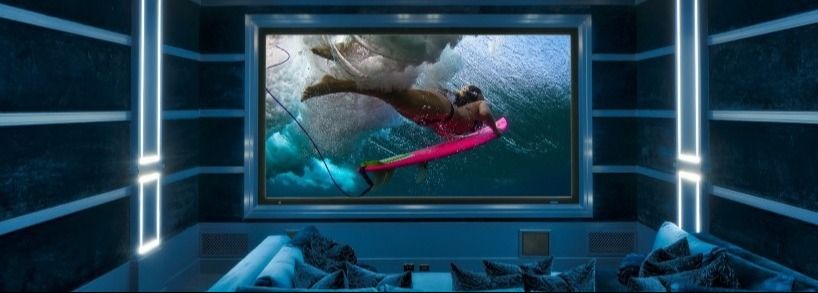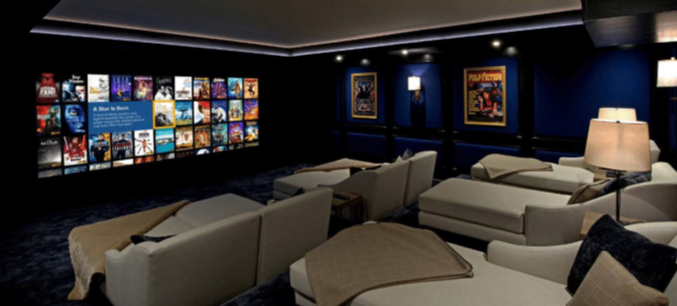
How to Embrace the Power of the Big-Screen Experience
Dedicated home theater systems stand out from their retail counterparts by providing truly immersive audio and dynamic, larger-than-life images. The latter is accomplished by finding the perfect partnership between your projector and screen. It's tempting to want to focus entirely on your projector's power and brightness, but your significant investment would be going to waste if you decided to play it on a blank wall. In this blog, we explain some things you should be taking into account when deciding which screen is the best fit for your Huntsville, Alabama home.
SEE MORE: 4 Must-Have Components of a Custom Home Theater
Size:
The first thing you need to take into account is where you want to install your custom home theater. You want to make sure the screen you choose fits the room. Your screen shouldn’t be filling your entire wall. You want it to be raised a few feet off the ground to be at eye level with the viewer. You also want to leave space on the sides to fit surround sound speakers.
The length of your room will also affect the size of your screen. If people are sitting too close to a large screen the brightness could hurt their eyes; images could come out pixelated, and it could be uncomfortable to take in the entire screen. The experts at AV Enthusiast will let you know just how big you can go depending on the length of your room and the number of seats you want.
Color:
Traditional white screens are the standard and are great for environments that have been specifically designed to reduce light. However, many manufacturers like Screen Innovations have developed darker options, usually gray or black, that can perform better in situations where ambient light is inevitable. These screens are designed to only absorb light that comes directly towards them, not from the sides.
Material:
Remember how we said you need extra space around your screen to fit surround sound speakers? You can also opt for woven or perforated screens that let you place speakers behind the screen, similar to the type of setup you’d have in a commercial theater.
Masking:
Masking lets you adjust your screen’s aspect ratio according to your activity. While most movies and television shows are now in a 16:9 format, you can change to 21:9 which is closer to what a commercial theater would have - or 4:3 used for standard television. Your screen will ‘shrink' through a black frame, so you're not distracted by unused space on your screen.
Retractable Screens:
If you want to extend the big-screen experience to a multi-purpose environment, you should invest in a retractable screen for your home theater system. These screens can retract into a niche in the ceiling, so they're completely invisible when not in use, and are perfect for use in a bedroom or media room.
Are you ready to enjoy the big-screen experience in your home theater? Contact AV Enthusiast for a custom installation.

Elevate your family’s entertainment experience with an indoor or outdoor home theater!

Elevate your game day experience with ultimate Home Tech!

Ringing in the New Year with Innovation and Connection

The Ultimate Home Theater and Smart Family Room Guide

